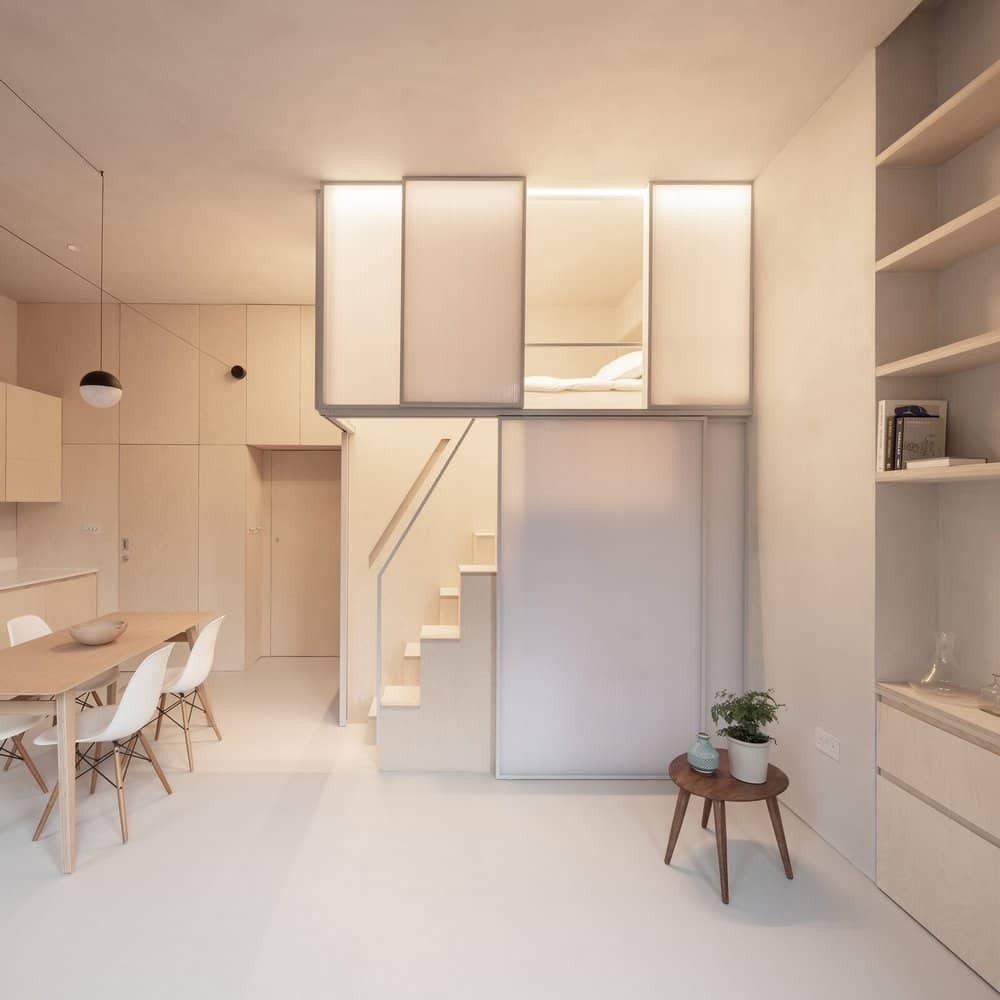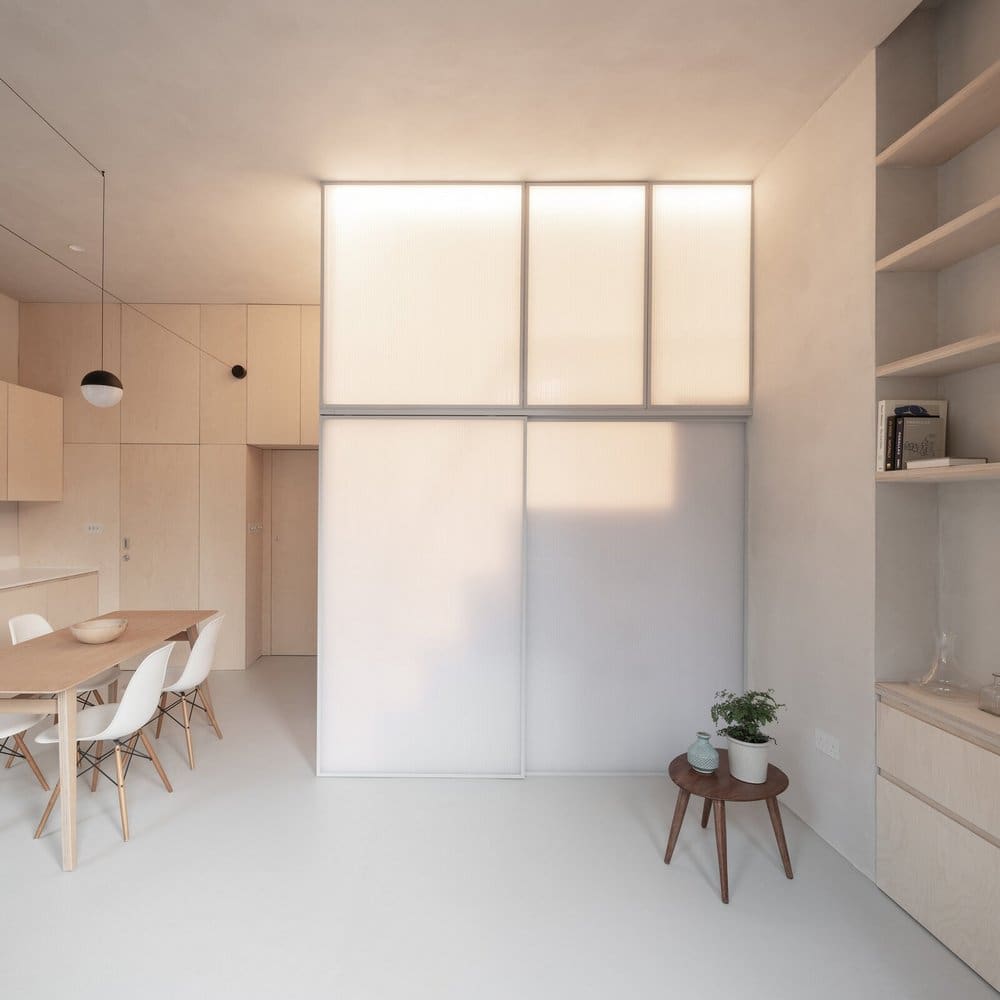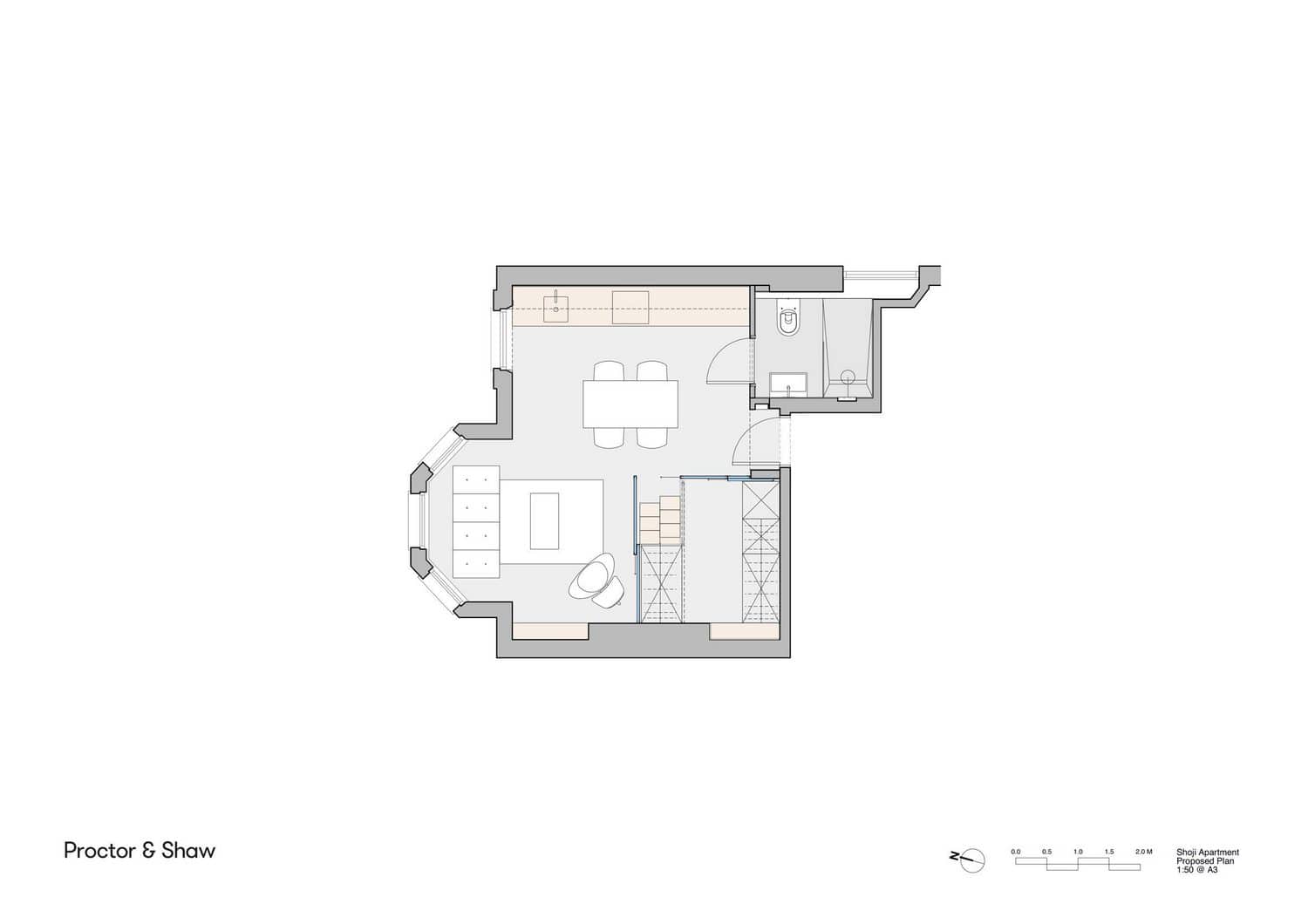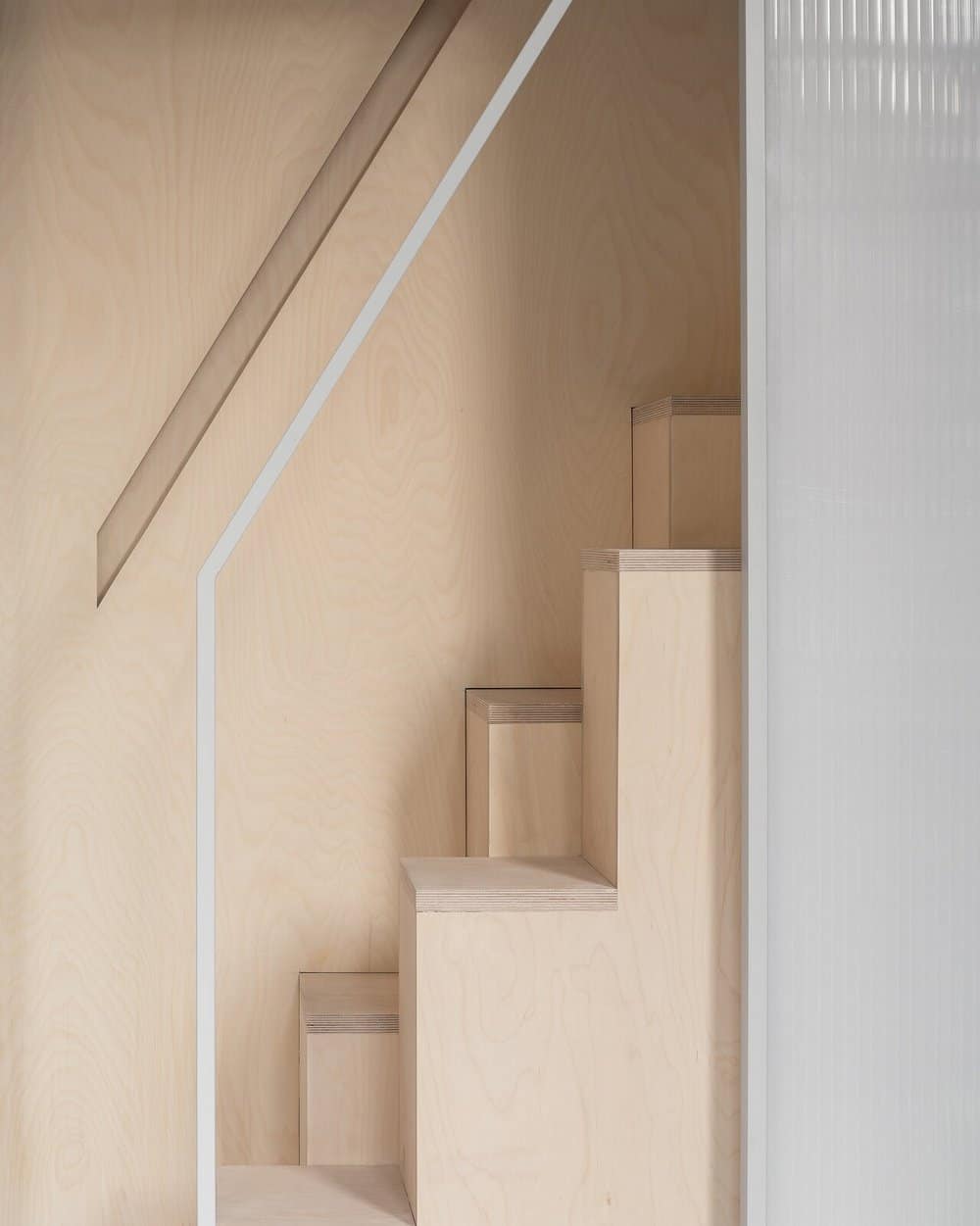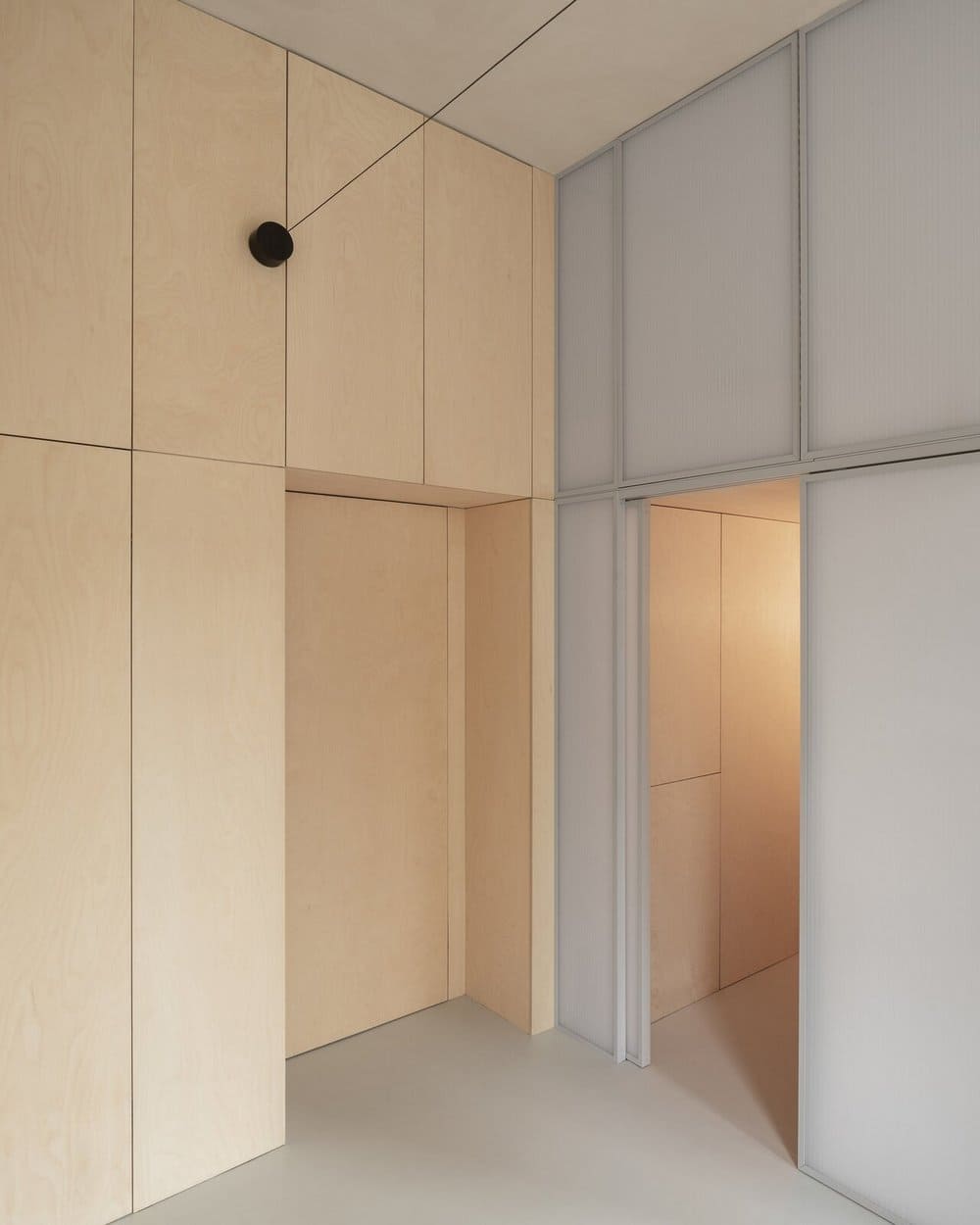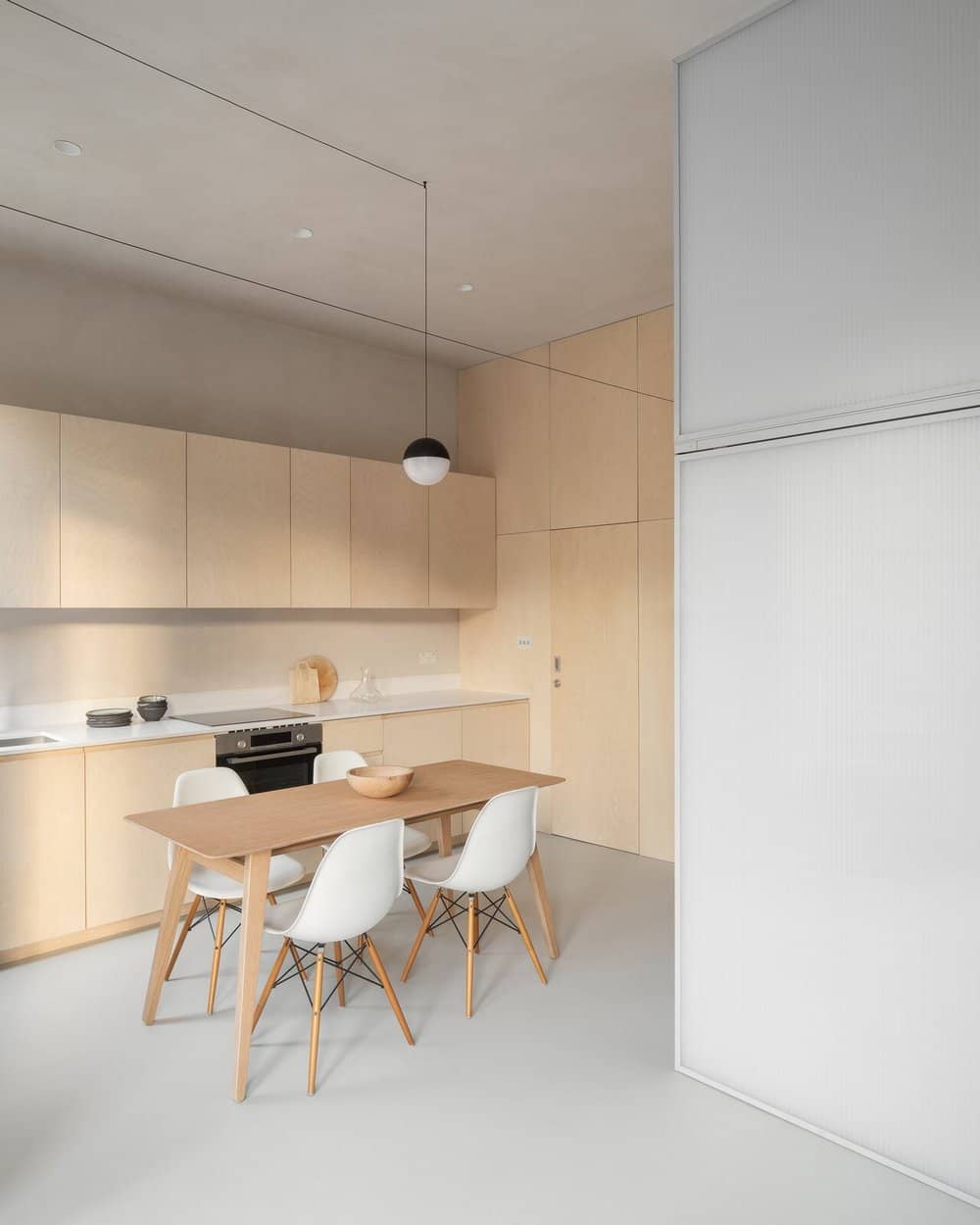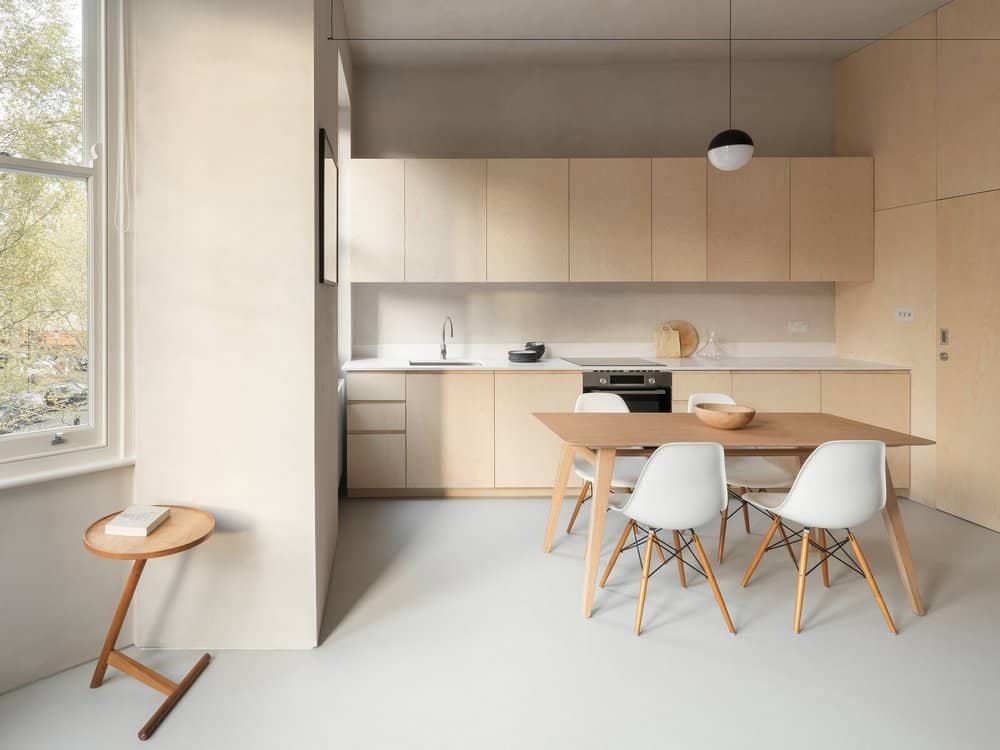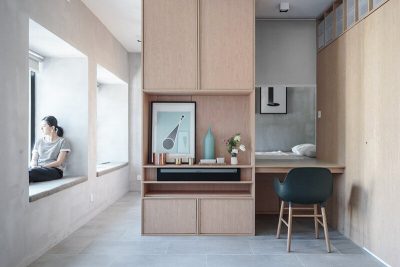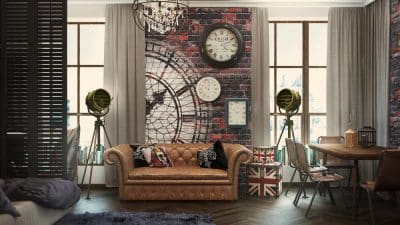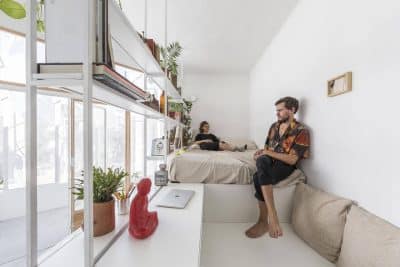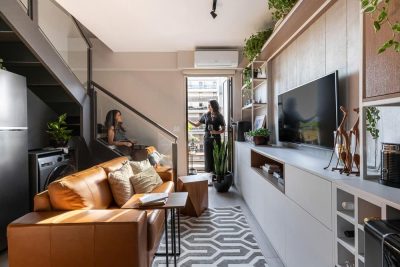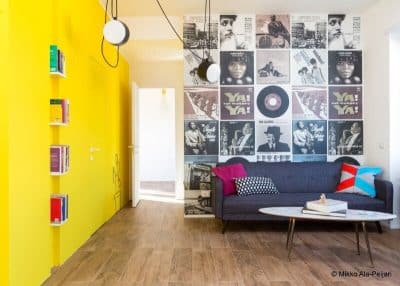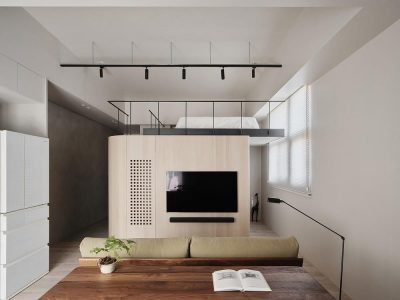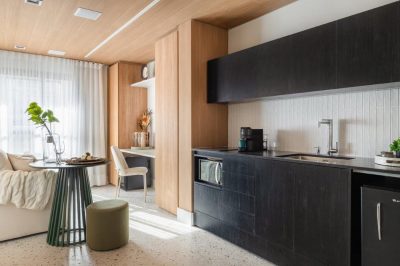Project: Shoji Apartment
Architects: Proctor & Shaw
Engineering: Jenson Hunt
Location: Belsize Park, LB Camden, London, United Kingdom
Completed: 2021
Area: 312 square feet
Photography: Stale Eriksen
The number of people living alone in the UK has increased by 4.0% over the last 10 years; in 2020 the proportion of one-person households ranged from 22.8% in London to 33.6% in Scotland and the North East of England. This is an increasingly significant group that current housing design is not catering well enough for.
Whilst the number of people living in one and two person households increases, and general trends of urbanised population growth and ageing continue, pressure to find desirably located and well designed property in cities will inevitably also continue to rise. This pressure ultimately impacts affordability and so size is a reasonable variable to consider in designing homes that must ‘work harder’ dimensionally for their occupier, and deliver new housing types that can contribute to rebalancing the depeening housing crisis in the UK.
Space standards are sometimes used as a clumsy proxy for ‘acceptable design’ but innovative solutions can also offer more with less. Building smaller can increase affordability, reduce material resource use (and waste) and promote innovation in design, from the space created through to fixtures and fittings.
Emerging technologies and changing social patterns are facilitating compact living in smaller self contained homes. Digital technologies allow a workstation to fit in a bag and the organisational tools that support our day to day to exist in virtual rather than physical space. The rise of the sharing economy promotes efficiencies that also can reduce our demands for private physical space, and a greater awareness of and commitment to environmental sustainability is changing individuals attitudes to acquiring space hungry non-essential goods as well as encouraging us to scrutinise the ‘footprint’ our lifestyles create. In tandem with these trends, design philosophies continue to explore the aesthetic and well-being benefits of ‘less is more’.
This all begs the question, should quality of space be benchmarked by different means other than size and amenity? After all, smaller minimum space standards exist in many developed countries around the globe, from cities such as New York and Hong Kong (no minimum), to countries including Netherlands (24 msq), France (14 msq), Taiwan (13 msq) and Australia (30 msq). In the UK, a quarter of people living in compact living solutions below the minimum standards are upwardly mobile and have choose location over size as a lifestyle choice.
Some commentators have reported that the recent global pandemic has challenged the efficacy of compact living as a model, where the trade off between size and location has perhaps at times seemed less beneficial, and access to their wider ‘urban living room’ has been restricted, but perhaps more than anything this event has just highlighted that the true quality of space, no matter how big or small, matters, and that better design is necessary to provide flexibility and resilience in the model.
Designing for mental health can be addressed at every scale, and this is no more true than in the design of compact spaces. Sanctuaries can be created that are a welcome retreat in times of refuge. The quality of fresh air, natural light and appealing views can and should outweigh and supplant the benefits of more floor area.
By designing ‘compact’, a greater attention is also directed towards material qualities to bring delight back into the spaces we inhabit. Such tactile and emotive spatial opportunities are explored in the design of the Shoji Apartment. If nothing else, the project highlights that quality is more important than size, and innovative design beats generic rules based solutions every time.
The Design
The client approached us with a desire to transform a cramped first floor one bedroom flat into an open plan arrangement filled with light and charactered by both serenity and a relaxed sense of material warmth. Often overlooked in single room accommodation, maximising useful storage was also a key part of the client brief.
We were immediately taken with the underexploited 3.4 metre ceiling heights in the property and developed a strategy for stacking accommodation vertically in order to maximise the generosity of the plan. Internal non-load bearing partitions were removed to allow a complete reconfiguration of the apartment. The existing arrangement placed the bedroom on the street with an under-exploited beautiful period bay window, and relegated undersized living and kitchen spaces to the darker parts of the plan. We turned this on its head positioning a double king size bedroom in the darkest corner of the plan, raised on a plinth accessed via a space saving plywood staircase, and arranged above a newly created walk-in wardrobe. The volume is wrapped in a translucent screen that can open and close to create privacy whilst sharing intimate framed views to the living areas and beyond to trees on the street.
The resulting furniture object is inspired by Japanese Shoji screen architecture and creates a ‘sleeping cocoon’ that animates the living space through different configurations, playfully exploring transparency, enclosure, and illumination whilst also providing an intimate and sensual retreat within.
A walk-in shower room, seamlessly finished in micro cement to floor, walls and ceiling, is re-fitted in an awkward corner of the plan, and a structural ceiling built above it to provide new loft storage for the property and hub for all services.
A kitchen is carefully planned with integrated appliances including bins, fridge freezer, dishwasher, and washer-drying machines, and finished in natural birch plywood fronts. Generous storage is also provided with wall to wall above counter joinery.
Acoustic insulation and boarding are added to floor and ceiling, and windows upgraded to double glazed, to better insulate the Shoji apartment from the noise and cold. This also allowed ceiling recessed lighting coves to be integrated to conceal blinds and indirect lighting sources in order to calm the space and provide flexibility in use. A feature pendant and cabling travels up walls and across the ceiling to further animate the space, arriving at the heart of the dining area.
Walls and ceiling are finished in soft clay plaster to create a unifying sense of subtle warmth to the space. Natural birch plywood was selected for kitchen and joinery elements, panelled from floor to ceiling to accentuate the height of the apace. Both provide balance to the more clinical industrial finishes of polycarbonate screening and a polyester powder coated aluminium frame that structures the sleeping pod. A linoleum acoustic floor is practical for spills, soft underfoot and ties into the natural palette of finishes.
Summary
We see the Shoji apartment as highly relevant to housing issues affecting city centers today. Period properties are often massively underexploited when converted to smaller unit accommodation, showing little or no imagination in how constraints might be turned into opportunities. The Shoji apartment shows that design quality need not be compromised when addressing the issues of limited space and poorly performing existing fabric. By exploiting the vertical dimensions of the existing condition, space is somewhat conjured out of nothing. The innovative sleeping pod creates an architectural insertion into the existing volume that creates delight through new vantage points and a sense of sanctuary, whilst solving issues of limited functional space and inadequate storage. The translucent and dynamic qualities of the pod and its surfaces maximise its benefits to the apartment. Open or closed, illuminated or opaque, its surface and volume are brought to life in use, acting at once as a lantern to the wider room, or a mezzanine with intimate views to the street. In only 29 square metres, we have created an apartment that punches way above its weight. To have a fully fitted walk in wardrobe space with king size bed accommodation, a generous kitchen with fully integrated appliances, a 6 seat dining table you can walk around, a 1.5m long walk-in shower, a living space with a magnificent 3 bay window, a dedicated loft storage space, all within a 29 square metre footprint, are luxuries rarely seen in single bedroom accommodation.

